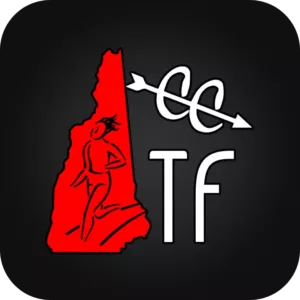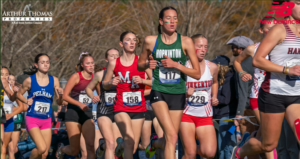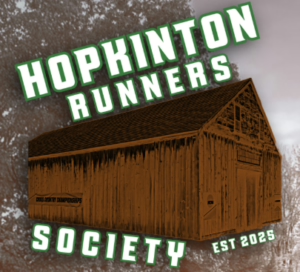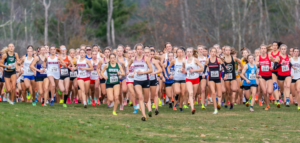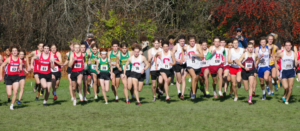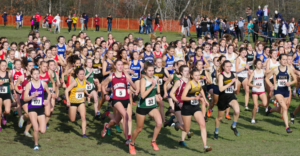Utah has held 3 cross country meets already (w/mass starts of 100!). Road races are currently being held both inside New Hampshire, New England and outside our region. Running events can be held safely. As of this date, NH’s COVID numbers are extremely promising. Promising enough to consider and possibly plan not only small events but larger ones operating under the same parameters. We have already posted 3 Easy Steps to Hosting a Dual Meet. Below we are going to detail how to break down larger meets during this pandemic to hopefully pave the way for State Division Championships and MOCs to be held end of October/early November. Once again, remember cross country is not football or a frat party and should not be treated as such. It is low risk as indicated by the National Federation and echoed by the NHIAA. Canceling seasons and state championships are accompanied by serious consequences felt by the entire cross country community, obviously felt the most by the kids who seriously need to experience the positive outcomes of sports and activity. These decisions should not be taken lightly.
So with all that being said, how can larger meets be held? Think about applying the 3 Easy Steps from dual meets to larger events. The start would have more waves, with athletes still 6 feet apart. With chip timing, we still do not need a chute at the finish. All should be practicing social distancing and wearing masks when not running. The wild card unique to larger events is the size of the crowds, the spectators. Spectators gathering at the start, mile marks, finish areas, awards ceremonies, concession stands, merchandise stands. Those are concerns. Below we address all of those; once again attempting to simplify! This is not a proposal but meant to promote positive, appropriate discussion.
Race Structure
We still have to operate under social distancing guidelines at the starting line. So meet directors will determine maximum number of athletes per the length of their starting line. For example purposes, lets say organizers can safely fit 30 runners on a starting line 6 feet apart. Also for example purposes lets say this is a 10-team invitational which limits teams to 7 runners each, yielding a maximum number of 70 runners per race. Since we can’t fit all 70 on the line, we have to have waves. To do this race together, we will need 3 waves. How do you break this up while also preserving the team aspect of our great sport??
In spirit of distancing and spreading out the field rather immediately, waves should be organized with fastest runners going off in the first wave. This not only lessens the opportunities for passing, but will take pressure off at the finish line. In our example, organize it as follows.
| Wave | Team Runners | Total Runners per Wave | Start Time |
| 1 | #1’s, #2’s |
20 |
Ex. 9:00 am |
| 2 | #3s, #4s |
20 |
30 seconds after wave 1 |
| 3 | #5s, #6s, #7s |
30 |
30 seconds after Wave 2 |
So how does meet management organize this efficiently? Begin with the starting line assigning/painting position numbers 1-30 indicated 6 feet apart. Each team is assigned 3 consecutive numbers. For example: Londonderry #s 1-3; Kennett #’s 4-6; Belmont #’s 7-10 etc. At least 6 feet behind the starting line, have a staging line where every team’s #3s and #4s will line up also according to team’s assigned position. And behind that line, is a second staging line where each team’s #s 5, 6, and 7 will line up. So for this scenario, meet management will have essentially 3 lines (starting line; staging line; staging line). Once the gun goes off, waves 2 and 3 move up a line. For our example, 30 seconds after the initial start, a second starting pistol fire will set off Wave 2 and Wave 3 will move up to the actual starting line. Thirty seconds later, a third pistol will fire completing the wave start.
It is important to remember to space your waves according to the type of course you have to ensure criss-crossing does not occur.
Now for the finish line. If it is an invitational, it should have chip timing, so a finish chute which creates obvious congestion, will not be necessary. Further, we recommend the finish area be large enough for athletes to spread out and recover from their effort. With both suggestions for starting and finish lines, if a course needs to be changed, change it!!! Whatever works so the kids can run safely.
Meet Structure
Consider this approach. With a 10-team limit, the above, with JV teams (7 only though) could take 3-4 hours to complete. We are talking from team arrival to team departure. Meet management could split the meet into 2 groups of 5 teams OR have another 10 team session in the afternoon (think traditional NH Indoor Track League morning and afternoon sessions). Regardless, if meet management chooses to have multiple sessions, they just need to design a time schedule ensuring the previous session’s teams are long gone prior to the next session’s arrival. It could be organized as described below…
AM Session Race Schedule (X number of teams)
Teams arrive no earlier than 8:00am
| Time | Race |
| 9:00am | JV Girls |
| 9:45am | JV Boys |
| 10:30am | Varsity Girls |
| 11:15:am | Varsity Boys |
Teams need to depart no later than 12:15pm
PM Session Race Schedule (X number of teams)
Teams arrive no earlier than 12:45pm
| Time | Race |
| 1:45pm | JV Girls |
| 2:30pm | JV Boys |
| 3:15pm | Varsity Girls |
| 4:00pm | Varsity Boys |
Awards
Final results could be based on a merge of both sessions but there would be no awards ceremony. Awards for each event, plaques for top 2 teams and medals for top individual finishers, could be distributed on a later date.
T-Shirts, Concession Stand & Port-A-Potties
To alleviate another potential congestion area, we suggest no t-shirt or concession stands. Tees could be preorder only with a link posted prior to event. Orders could be distributed to coaches when they pick up their packets. Port-A-Potties need to be set 6 feet apart with cones, or tape indicating how lines should be organized (like in store check out lines).
Spectators
This might be controversial, but in the spirit of kids first, and potentially being able to hold larger events…No spectators. This will alleviate overall event congestion which threaten maintaining appropriate social distancing in many different areas. Obviously if a large event is scheduled, Newhampshirecrosscountry.com would be there to cover it with pics, possible livestream (depending on venue), race videos to post ASAP upon the conclusion of the meet. If a venue is large enough to allow for social distancing throughout, obviously this is up to meet management, but less people certainly makes social distancing much easier.
To conclude, please keep in mind we used specific numbers to demonstrate concepts for examples only. It truly is up to the host school, meet management, etc, as to what is appropriate for their meet. Number of teams, athletes, format could all be adapted to suit.
Also keep in mind, this should not be a first meet! We need to prove we can first have safe, SMALL dual or tri-meets prior to holding any type of larger event.
Obviously transportation is a huge question regarding high school sports with districts having a range of restrictions. Even though this is a large event, at most each team is bringing 14 per gender. As we stated before, less people certainly social distancing much easier. Further, considering this is on the weekend, to ease any bus travel, allow parents to drive their kids to the larger meet. After all, AAU and other outside school leagues mostly do not provide transportation and leave it to the parents.
Again, this is not a proposal but simply meant to promote productive discussion and exchange of ideas.
-NHCC





